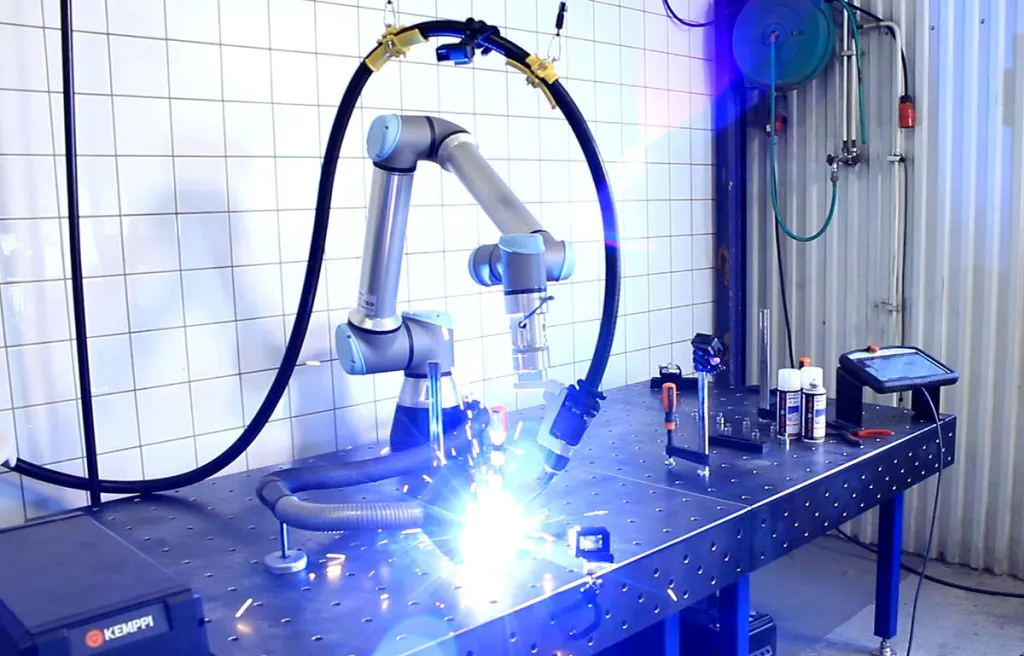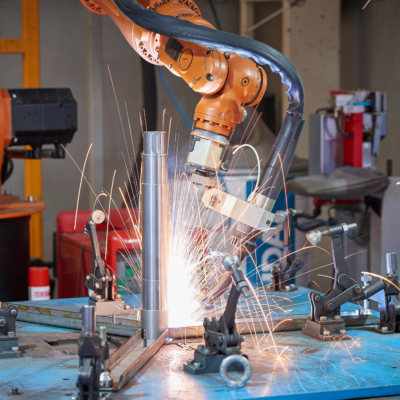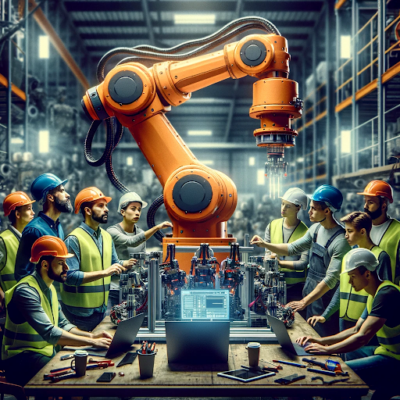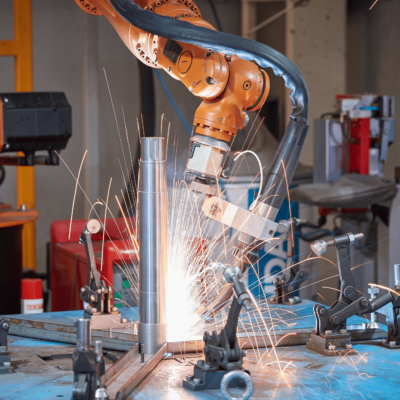Universal Robot Cobot, powered by Smooth Robotics technology, seamlessly collaborates with humans to achieve unparalleled precision and efficiency.
Cobot welding, or collaborative robot welding, has changed the way we do welding. It’s a mix of robots and human work, and it has lots of benefits. In this article, we will explore cobot welding, including its definition, evolution, advantages, applications, and what’s ahead.
Explaining Cobot Welding:
To understand the benefits of cobot welding, let’s first clarify what it is. Cobot welding uses special robots called cobots to work with humans in welding. These cobots are designed to cooperate with human workers, making them better and more productive. Unlike regular welding robots, cobots are programmed to work safely and efficiently with humans.
So, what makes cobot welding special? It’s the smooth teamwork between humans and robots. In cobot welding, robots and humans work together on welding tasks. These robots have advanced sensors and safety features, allowing them to work closely with humans without any safety concerns.
Here’s a scenario to picture: A human welder is working on a complex welding job. With a cobot’s help, the human worker can assign repetitive and physically demanding tasks to the robot while focusing on the more intricate parts of the job. This not only makes work more efficient but also reduces the risk of injuries from doing the same movements over and over or from being around harmful welding fumes.
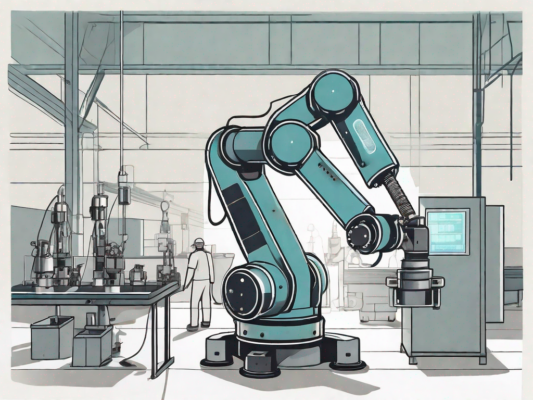
Evolution of Cobot Welding:
The idea of cobot welding has changed a lot. At first, welding robots were mostly used in big factories. But with better technology and a focus on safety, we started thinking about robots that can work with people. Now, cobot welding is used in many industries, like making cars, manufacturing, and aerospace.
As technology gets better, cobot welding gets better too. New cobots can learn and get better at welding in different situations. This means they become more and more efficient over time.
Also, cobot welding has created new jobs instead of taking them away. Cobots work with humans and help companies do more and more complex welding projects. This teamwork between people and robots is changing the welding industry, making it more efficient and safe.
Advantages:
Now that we know the basics of cobot welding, let’s look at the benefits it brings:
1. Enhancing Productivity:
Cobot welding speeds up work and boosts production. Unlike traditional welding, where people do the work, cobot welding uses robots that work on their own and work faster. This allows human workers to concentrate on the more challenging welding tasks, making everything more efficient.
Moreover, cobot welding systems can work continuously without breaks, keeping production running smoothly. This reduces the idle time when nothing is happening, and we use resources more efficiently, making work even more productive.
2. Safety Improvements:
Cobot welding is also great for safety. These robots have safety features like force sensors and collision detectors. If they touch a human worker, they stop or move away. This keeps everyone safe and reduces accidents.
Cobot welding also means that humans don’t have to work in dangerous or tough welding places. Robots can handle tasks in extreme temperatures, with toxic fumes, or in small spaces. This means workers don’t have to risk their health. It not only makes things safer but also keeps workers healthier.
Moreover, cobots can do the same boring welding jobs over and over, which can make workers tired and more likely to make mistakes. By doing these tasks, cobots keep workers from getting tired and help them stay focused. This makes the work environment safer.
3. Quality Control:
Checking the quality of welds is very important, and cobot welding is great at it. Robots that work together are super precise and make the same good welds every time. This means fewer mistakes and better quality. It also saves money because there are fewer fixes needed.
Cobots can use fancy sensors like vision systems and laser sensors to find and fix problems right away. This helps with quality control and stops bad welds from happening.
Cobot welding systems can also be programmed to check welds closely, making sure they are done right. This extra precision and accuracy make the welding process and the final product better.
Different Industries:
With its numerous advantages, cobot welding has found applications in various industries. Let’s explore how cobot welding is being implemented in different sectors.
1. Automotive Industry:
Car makers were among the first to use cobot welding. They need precise welding for fuel-efficient and high-quality vehicles. Cobot welding helps make sure car parts are welded accurately, making cars perform better and safer.
2. Manufacturing:
In manufacturing, cobot welding helps make things more efficiently and at a lower cost. By using robots for welding, manufacturers can make more products and spend less. Cobot welding also offers flexibility because robots can work with different products and welding needs.
4. Aerospace:
The aerospace industry needs perfect welding for aircraft. Cobot welding is a game-changer here, making precise and consistent welds in complex plane parts. Aerospace companies use cobots to meet high-quality standards, improve efficiency, and make things faster.
Future of Cobot Welding:
As technology continues advancing, we anticipate further growth and development in cobot welding. Let’s explore the future prospects of cobot welding.
1. Advancements in Technology:
Cobot welding is always getting better. Scientists and engineers are working on making robots smarter and improving how welding is done. We expect that things like artificial intelligence, better sensors, and clever teamwork algorithms will make cobots even better at welding.
2. Impact on Job Market:
Some people worry that cobot welding might take jobs away, but studies show it actually makes new jobs and makes workers happier. Cobot welding takes over boring and tough jobs, so people can do more important things like programming, checking quality, and making the welding process better.
3. Sustainablility:
Sustainability is important in many industries, and cobot welding helps with this. It reduces waste, uses less energy, and makes fewer mistakes, which is good for the environment. Also, the welds it makes are better, so products last longer and don’t need repairs or replacements as often.
Conclusion:
In conclusion, cobot welding offers a multitude of benefits across various industries. From enhanced productivity and safety improvements to superior quality control and future prospects, cobot welding is revolutionizing the welding landscape. As businesses continue to embrace this collaborative approach to welding, we can expect to see further advancements and growth in the field of cobot welding.
To learn more about cobot welding.
Are you looking for a System Integrator?
Visit Qviro
